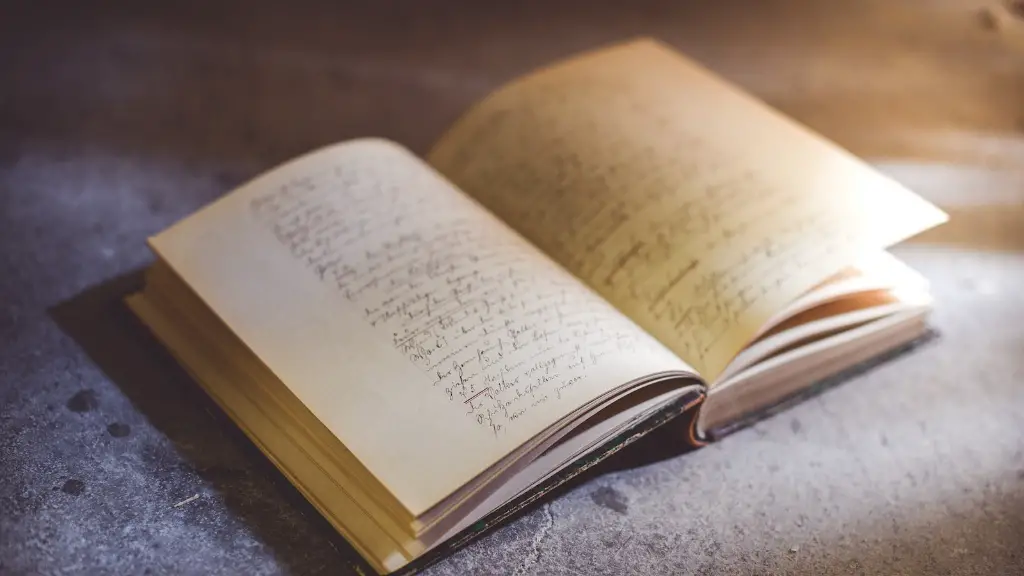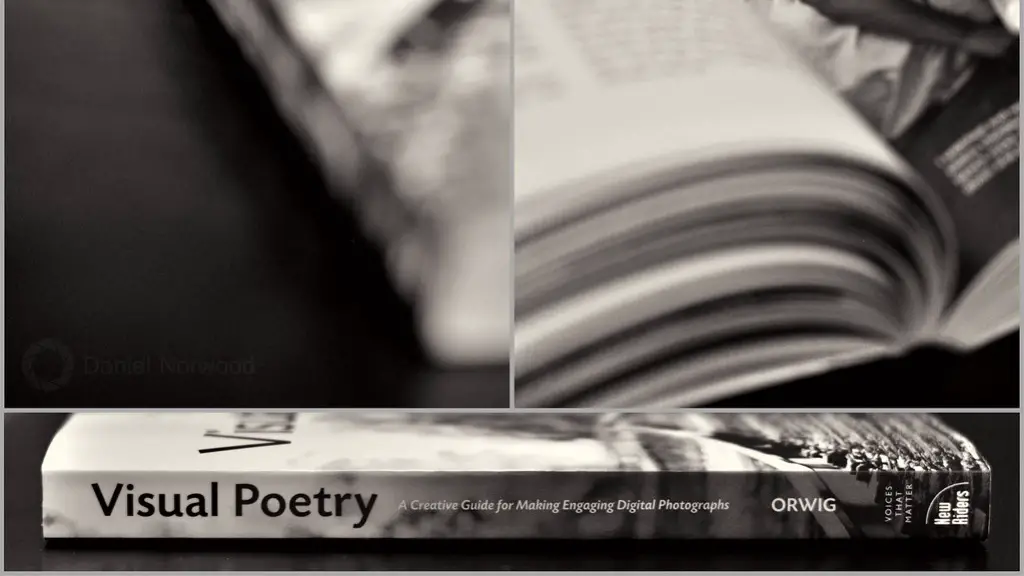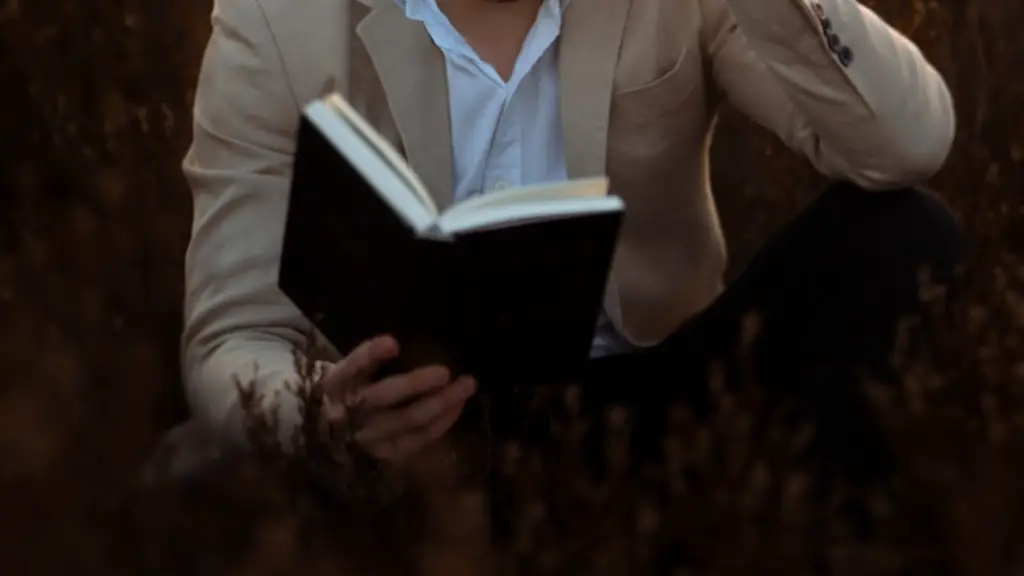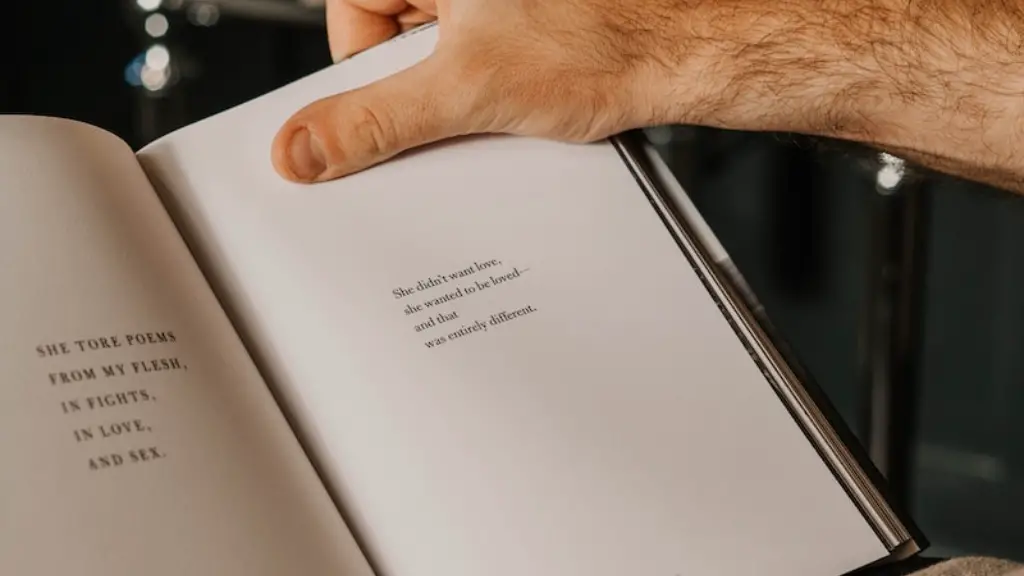How to Determine Meter in Poetry
Understanding the rhythm of a poem is helpful for interpreting its meaning and enriching the experience of reading it. Meter, one type of poetic rhythm, is the regular pattern of stressed and unstressed syllables in the lines of a poem. This article will explain how to determine the meter of a poem and how to use that knowledge to enhance your appreciation of poetry.
Most English poetry is written in what is called “metrical verse,” meaning it is composed of lines that contain a recurring pattern of stressed and unstressed syllables, known as a foot. The degree of stress is determined by the rhythm of the language and the context. A line of poetry can feature multiple different feet.
The first step in determining meter is to transcribe the poem into a common metre, a system of transcribing lines of poetry which assigns each syllable a numerical value. A syllable with a stronger stress is given a higher value; an unstressed syllable is given a lower value. For example, in iambic pentameter, the most common metre in English, each line would be written out as five “feet” or groups of syllables: ten syllables overall, each of which is either stressed (S) or unstressed (U): U/S U/S U/S U/S U/S.
Once the metre of the poem is established, it is possible to analyze the poem from a structural perspective. One clue to understanding a poem is where there are variations in the metre. A breve, for example, can be identified as a pair of syllables equally stressed. By looking for these kinds of changes, you can gain insight into changes in the poem’s mood and meaning.
Understanding meter can also help you appreciate the way a poem plays with the metre. Meter is a key element in the creation of poetic effects, such as the tension between regularity and irregularity. By taking note of when the metre of a poem shifts and by what degree, you can gain insights into the subtleties of a poet’s craft.
In conclusion, learning to identify meter in a poem is a vital tool for deepen your appreciation of poetry. It helps you understand the poem’s rhythm, identify structure in the poem, and recognize the craftsmanship of the poet’s word play.
Ideas to Practice Reading Metered Poetry
The best way to learn to recognize meter in a poem is to practice regularly. Here are some ideas to help get you started.
First, start by reading familiar poems out loud to yourself. Take note of the patterns of stress and unstressed syllables. Reading aloud helps your ear become attuned to the rhythmic patterns.
Next, focus on a single line at a time. Read the line aloud and try out different interpretations of the meter. You may find that a line in one metre feels more comfortable than another.
You can also start writing your own poems in the same metre as the poem you are trying to understand. This will help you become familiar with recognising and creating the metre as you go and provide an opportunity to experiment with variations in the metre.
Finally, ask an experienced poet or professor to help guide you through the reading of a particular poem and to answer any questions that arise. A teacher can help you learn the conventions of poetry and identify meter in particular poems.
Why Metered Poetry is Different from Free Verse
Free verse is a kind of poetry that does not adhere to any specific metrical pattern. This style of poetry is characterized by the absence of set metre, patterned rhyme, or a predetermined line-length. As a result, the poet is free to use images and language unconstrained by meter.
In contrast, metered poetry follows a set pattern of stressed and unstressed syllables, which is used to create rhythmic patterns, express ideas and feelings, and control the flow of the poem. This form of poetry relies heavily on the poet’s ability to use sound to convey emotion and create memorable images.
By understanding meter and its contribution to the poem, a reader develops a better appreciation for how poets use language to create specific effects. As a result, the poem can be understood and experienced on a more visceral level.
Is Meter Necessary to Writing Poetry?
The answer to this question lies in the intentions of the poet. Meter is not technically necessary to write a poem, as free verse poetry is an accepted form of poetic expression. However, meter can be a useful tool for poets who wish to convey certain meanings or emotions. By adhering to a set metre, a poet can both control the way language is used and construct the poem in the way they desire.
Similarly, understanding meter is important to the reader. Without an understanding of the metre of a poem, the reader may miss out on some of the most compelling aspects of the poem, such as its mood, themes, and meaning. Meter provides a layer of resonance that can be missed without an understanding of it.
Common Example of Meters in English
Common types of metered poetry in English include iambic pentameter, trochaic tetrameter, anapestic trimeter and dactylic hexameter. These terms refer to the number of feet in a line and the specific rhythms used.
Iambic pentameter is the most common metre in English. It is composed of lines of five “feet” or groups of syllables featuring an iambic rhythm—two syllables alternating between stressed and unstressed in each foot. An example of this rhythm can be found in William Shakespeare’s play, Romeo and Juliet: “But soft! what light through yonder window breaks?”
Trochaic tetrameter is composed of lines with four “feet” or groups of syllables featuring a trochaic rhythm—one stressed syllable followed by one unstressed syllable in each foot. An example of this metre can be found in Robert Frost’s poem, “Stopping by Woods on a Snowy Evening”: “Whose woods these are I think I know.”
Anapestic trimeter is composed of lines of three “feet” or groups of syllables featuring an anapestic rhythm—two unstressed syllables followed by one stressed syllable in each foot. An example of this metre can be found in A.A. Milne’s poem, “Halfway Down”: “Halfway down the stairs is a stair, where I sit.”
Dactylic hexameter is composed of lines with six “feet” or groups of syllables featuring a dactylic rhythm—one stressed syllable followed by two unstressed syllables in each foot. An example of this metre can be found in Homer’s epic poem The Iliad: “Sing, goddess, of the anger of Achilles, son of Peleus.”
How Meters Can Convey Meaning in Poetry
Through the use of metre, a poet is able to control the pace of the poem and the way meaning is conveyed. For instance, a slower pace often implies a more contemplative and thoughtful mood, while a faster pace can create a sense of urgency and excitement. Variations and deviations from the set metre can be used to emphasize certain words or phrases and add tension to the poem.
Meter can also be used to create an interesting play on words. By shifting the metre of the poem, the poet can highlight certain words for emphasis or make them seem more important than others. This is a useful tool for conveying the deeper meaning of a poem.
Finally, metre can be used to create a sense of rhythm and harmony. By creating a continuous pattern of rhythmic sounds, a poet can create a harmonious effect that is pleasing to the reader. This can help draw the reader deeper into the poem and make it more memorable.
Conclusion
Meter is an essential component of poetry and is used to create a unique poetic experience. It helps control the way the poem is written and allows the poet to express their thoughts and feelings in a unique and powerful way. By learning to recognize meter in a poem, the reader can get a deeper understanding of its meaning and how it is meant to be experienced.





